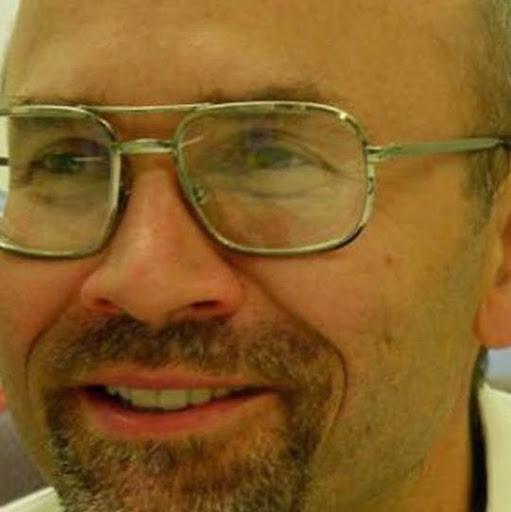Elliott S Brown
from Danvers, MA
Elliott Brown Phones & Addresses
- Danvers, MA
Work
-
Company:Morgan, Lewis & Bockius LLP
-
Address:
Lawyers & Attorneys

Elliott Brown - Lawyer
view sourceOffice:
Morgan, Lewis & Bockius LLP
ISLN:
1000379828
Admitted:
2017
Us Patents
-
Apparatus And Method For Optical Heterodyne Conversion
view source -
US Patent:56636393, Sep 2, 1997
-
Filed:Jan 18, 1994
-
Appl. No.:8/183057
-
Inventors:Elliott R. Brown - Billerica MA
Frank W. Smith - Liverpool NY -
Assignee:Massachusetts Institute of Technology - Cambridge MA
-
International Classification:G01R 1900
H01J 4014
H04B 1006 -
US Classification:324 96
-
Abstract:An apparatus and method for optical heterodyne conversion and a radiation source and integrated diagnostics using the apparatus and method are disclosed. The radiation source can operate in a high-power narrow-band mode in which a constant-frequency output is provided or in a low-power broadband mode in which the frequency is tunable to allow the radiation source to act as a sweep oscillator. The apparatus or photomixer includes two sets of interdigitated conductive electrodes formed on top of a crystal lattice formed of column III-V compounds, particularly InAlGaAs compounds. Additional column V atoms are interspersed within the lattice structure to form defect energy states in the bandgap of the host material. The region of the material between the interdigitated electrodes is illuminated by optical radiation containing two different frequencies. Photon absorption in the material causes a current at the difference frequency to be generated and coupled to the interdigitated electrodes.
-
Coherent Fourier Transform Radiometer For Determining The Thickness Distribution Of An Oil Film On A Body Of Water Based On The Brightness Temperature Of The Oil Film And Water Over A Range Of Radiation Frequencies
view source -
US Patent:53814428, Jan 10, 1995
-
Filed:Apr 1, 1993
-
Appl. No.:8/041728
-
Inventors:Elliott R. Brown - Billerica MA
Gregory G. Hogan - Stowe MA
Gerald M. Daniels - Norwood MA -
Assignee:Massachusetts Institute of Technology - Cambridge MA
-
International Classification:G01N 2500
G01B 1106 -
US Classification:374 7
-
Abstract:A radiometer is described which coherently detects the thickness of oil films on water by converting continuous-frequency microwave or millimeter-wave brightness temperature versus frequency measurements from the frequency/wavenumber domain to the oil-film-thickness domain (received power versus film thickness) using Fourier-transform signal processing.
-
Photoconductive Optical Correlator
view source -
US Patent:59006242, May 4, 1999
-
Filed:May 29, 1996
-
Appl. No.:8/654642
-
Inventors:Simon Verghese - Boston MA
Elliott R. Brown - Billerica MA
Qing Hu - Boston MA -
Assignee:Massachusetts Institute of Technology - Cambridge MA
-
International Classification:H01J 4014
-
US Classification:250214LS
-
Abstract:An optical correlator for correlating incident optical signals is described. The correlator comprises a transmission line in close juxtaposition to a photoconductor. The photoconductor may be positioned within the transmission line. The transmission line and the photoconductor may be monolithically integrated on a substrate. The optical correlator has an electrical non-linear response to the incident optical signals that results from a voltage divider formed from the combination of the transmission line and the photoconductor. The electrical non-linear response is proportional to a second-order intensity autocorrelation function g. sup. (2) (. tau. ). The response time of the electrical nonlinear response is less than the width of the narrowest pulse of the optical signals and may be less than twenty picoseconds.
-
Radiometer For Determining Oil Film Thickness
view source -
US Patent:56720076, Sep 30, 1997
-
Filed:Jan 6, 1995
-
Appl. No.:8/369621
-
Inventors:Elliott R. Brown - Billerica MA
Gregory G. Hogan - Stowe MA
Gerald M. Daniels - Norwood MA -
Assignee:Massachusetts Institute of Technology - Cambridge MA
-
International Classification:G01N 2500
G01B 1106 -
US Classification:374 7
-
Abstract:A radiometer is described which coherently detects the thickness of oil films on water by converting continuous-frequency microwave or millimeter-wave brightness temperature versus frequency measurements from the frequency/wavenumber domain to the oil-film-thickness domain (received power versus film thickness).
-
Highly Efficient Planar Antenna On A Periodic Dielectric Structure
view source -
US Patent:53862155, Jan 31, 1995
-
Filed:Nov 20, 1992
-
Appl. No.:7/979291
-
Inventors:Elliott R. Brown - Billerica MA
-
Assignee:Massachusetts Institute of Technology - Cambridge MA
-
International Classification:H01Q 928
-
US Classification:343795
-
Abstract:Efficient transmission and reception of electromagnetic radiation are achieved by an antenna on a substrate. An antenna is fabricated on the top surface of a substrate which includes a periodic dielectric structure. The antenna operates at a frequency within the band gap of the periodic dielectric structure. Radiation emitted by the antenna cannot propagate through the structure and is therefore emitted only into space away from the substrate. When the antenna is receiving, radiation striking the device does not propagate through the substrate but is concentrated at the antenna. A phased array with isolated elements is achieved by fabricating the array elements on top of a substrate having a periodic dielectric structure and by surrounding the circuits associated with each antenna element with the periodic dielectric structure. Radiation from an element or associated circuitry at a frequency within the band gap of the structure cannot propagate into the substrate to interfere with other elements.
-
Optical-Heterodyne Receiver For Environmental Monitoring
view source -
US Patent:53048059, Apr 19, 1994
-
Filed:Mar 26, 1993
-
Appl. No.:8/037239
-
Inventors:Elliott R. Brown - Billerica MA
K. Alexander McIntosh - Groton MA -
Assignee:Massachusetts Institute of Technology - Cambridge MA
-
International Classification:G01J 502
-
US Classification:2503381
-
Abstract:A GaAs/AlGaAs multiple-quantum-well (MQW) is used as an optical mixer for environmental monitoring of atmospheric emission or absorption signals in the infrared (IR) region. The atmospheric signals are combined with coherent laser local oscillator emission lines to produce IF signals within the electrical bandwidth of the MQW mixer.
Wikipedia References

Elliott Jerome Brown Jr.

Elliott R. Brown
Resumes

Elliott Brown
view source
Elliott Brown
view source
Elliott Brown
view source
Elliott Brown
view source
Elliott Brown
view sourceLocation:
United States
License Records
Elliott Foss Brown
License #:
0480 - Expired
Category:
Architecture
Issued Date:
Jan 25, 1952
Expiration Date:
2000
Elliott Brown
License #:
5261 - Expired
Category:
Health Care
Issued Date:
Dec 14, 1987
Effective Date:
Jun 19, 2012
Expiration Date:
Nov 30, 2013
Type:
Physical Therapist
Isbn (Books And Publications)



Elliott Andrew Brown Sr.
view source
Krendy Elliott Brown
view source
Elliott Glen Brown
view source
Judy Elliott Brown
view source
Elliott Brown Sr.
view source
Elliott Brown
view source
Marlene Elliott Brown
view source
Elliott Brown
view sourceYoutube
Plaxo

Elliott Brown
view sourceLead, Enterprise Remote Access Department at Catho...

Elliott Brown
view sourceAccount Director at THINK Interactive

Elliott Brown
view sourceJPMorgan
Classmates

Elliott Brown
view sourceSchools:
Clay High School West Point MS 1990-1994
Community:
David Yeager, Ethel Webb

Elliott Brown (Marley)
view sourceSchools:
Saint Francis Episcopal Day School Potomac MD 1991-1999, Woods Academy Bethesda MD 1999-2002, Holy Child High School Potomac MD 1999-2002, Herbert Hoover Middle School Potomac MD 1999-2003
Community:
Rosemarie Patane, Eileen Bresnahan, Kate O'connor

Elliott Brown
view sourceSchools:
Edgewood High School San Antonio TX 1990-1994
Community:
Osvaldo Garza, Robert Garza

Elliott Brown
view sourceSchools:
Longwood High School Middle Island NY 2004-2008
Community:
John Lohman, Gloria Sanseverino, Anthony Ruiz

Elliott Brown
view sourceSchools:
Mary C. I. Williams School Wilmington DE 1958-1963
Community:
Judith Shaivitz, Bill Bramble

Elliott Brown
view sourceSchools:
Irwin Avenue Open Elementary School Charlotte NC 1998-2002
Community:
Kelley Magill, Libby Robertson, Heather Stanley, Grecia Mazariegos

Elliott Brown
view sourceSchools:
Davies Vocational School Lincoln RI 1974-1978
Community:
Paul Landry, Bill Phillips, Luis Horta, Richard Corneau, Sharon Webb, Cathy Richards
Myspace

Elliott Brown
view sourceFlickr
Googleplus

Elliott Brown
Work:
Moloobhoy & Brown - Owner / Design Director (2012)
The Tribe - Design Director (2008-2011)
GsFitch - Senior Designer (2005-2008)
Red Stone Design - Designer (2001-2005)
The Tribe - Design Director (2008-2011)
GsFitch - Senior Designer (2005-2008)
Red Stone Design - Designer (2001-2005)
About:
Graphic designer based in Dubai. Love branding, print and typography.

Elliott Brown
Work:
Wright State University - Professor
Education:
California Institute of Technology

Elliott Brown
Work:
Zen Internet (2007)

Elliott Brown
Work:
Holiday Valley - Head of Mountian Ops.

Elliott Brown

Elliott Brown

Elliott Brown

Elliott Brown
Get Report for Elliott S Brown from Danvers, MA













